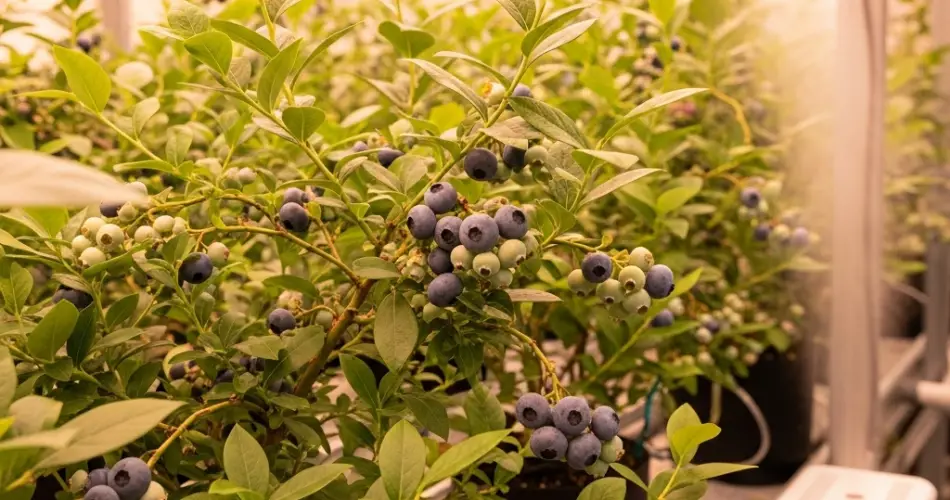Imagine harvesting plump, juicy blueberries from your own home—even in the middle of winter. Growing blueberries indoors isn’t just possible; it’s surprisingly manageable with the right setup. Whether you live in a high-rise apartment or a small home without a garden, you can enjoy fresh berries year-round. Here’s how to grow blueberries indoors and impress everyone with your thriving mini-fruit farm.
Choose the Right Blueberry Variety
Not all blueberry plants are suited for indoor growing. To increase your chances of success, go for dwarf or compact varieties. These are naturally smaller, adapt better to pots, and require less space while still producing an abundance of fruit. Great indoor options include:
-
Top Hat: A dwarf variety that grows only 18–24 inches tall. Perfect for containers.
-
Northblue: Another compact plant that thrives in pots and produces full-sized berries.
-
Sunshine Blue: Semi-dwarf, self-pollinating, and tolerant of a wider pH range than most.
While some blueberries need a pollination partner, many dwarf varieties are self-pollinating, making them ideal for indoor conditions.
Select the Best Container
Your blueberry plant’s container is key to its health and productivity. Use:
-
A pot at least 12–16 inches in diameter and 12 inches deep
-
Containers with good drainage holes
-
Plastic, ceramic, or clay pots—but ensure they’re not too heavy if you plan to move them for sunlight
Lining the bottom with small rocks or coarse gravel before adding soil can help drainage and prevent root rot.
Use Acidic, Well-Draining Soil
Blueberries need acidic soil to thrive. Aim for a pH level between 4.5 and 5.5. Use:
-
A potting mix specifically for acid-loving plants like azaleas or rhododendrons
-
Alternatively, mix peat moss, perlite, and pine bark for a DIY blend
-
Avoid using regular garden soil, as it often lacks the acidity and drainage blueberries require
Test your soil’s pH using a home kit and adjust if needed. Adding elemental sulfur can help lower pH naturally.
Light Requirements
Blueberries love sunlight. Indoors, they need at least 6–8 hours of direct light per day. If your windows don’t offer that much, consider:
-
Placing the plant in a south- or west-facing window
-
Using a full-spectrum grow light to supplement sunlight
Position the light about 6 inches above the plant and leave it on for 12–16 hours daily. This ensures healthy growth and promotes fruiting.
Watering and Humidity
Consistent watering is crucial. Blueberries dislike both dry and soggy roots. Follow these tips:
-
Keep the soil evenly moist but never waterlogged
-
Water when the top inch of soil feels dry
-
Use filtered or rainwater if possible, as tap water can alter soil pH over time
Humidity is also important. If your indoor air is dry, especially in winter, place the pot on a tray of water with pebbles, or use a humidifier nearby.
Feeding Your Blueberry Plant
Indoor plants rely entirely on you for nutrients. Feed your blueberries with a fertilizer for acid-loving plants, typically once a month during the growing season. Organic options like fish emulsion or compost tea also work well.
Avoid over-fertilizing, as too much nitrogen can promote leaf growth at the expense of fruit.
Pruning and Maintenance
Even small blueberry plants benefit from occasional pruning:
-
In early spring, remove any dead, weak, or crowded branches
-
Pinch off early flowers in the first year to help the plant establish stronger roots
-
After the first year, allow it to flower and fruit freely
Clean your pruning tools before and after to prevent the spread of disease.
Pollination and Fruit Production
While some indoor-friendly blueberry varieties are self-pollinating, hand pollination can improve yields. When the plant blooms:
-
Use a small paintbrush or cotton swab
-
Gently dab the inside of each flower and transfer pollen from one to another
This simulates insect activity and increases your chances of a heavy harvest.
Harvesting Your Indoor Blueberries
Blueberries don’t ripen all at once. Harvest when the berries:
-
Are fully blue with no green or red spots
-
Feel firm but give slightly when gently squeezed
-
Come off the stem with a light tug
Keep checking daily once they start ripening, and enjoy them fresh or store them in the fridge.
Extra Tips for Success
-
Rotate the pot weekly so all sides receive even light.
-
Keep plants away from drafts or heat sources like radiators.
-
In winter, reduce watering slightly but maintain humidity and light levels.
Final Thoughts
Growing blueberries indoors might sound ambitious, but with the right care, it’s a surprisingly low-maintenance way to enjoy fresh fruit. Not only will your home smell amazing when they bloom, but your neighbors will be envious of the sweet, homegrown berries you harvest in any season.



